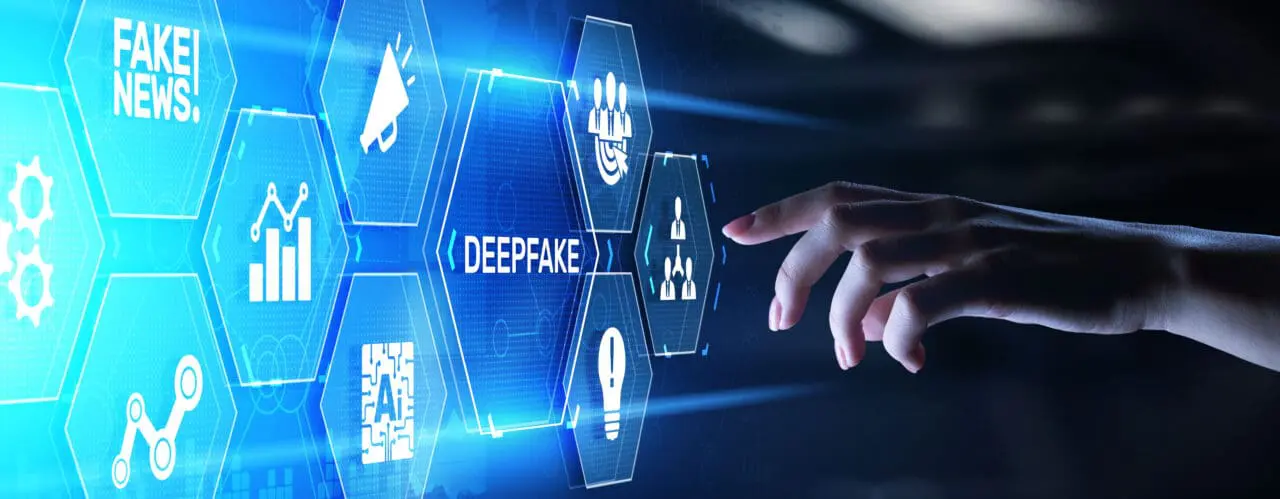

The introduction of VASA-1 by Microsoft represents a monumental advancement in artificial intelligence, especially in generating lifelike talking faces from still images and audio, a field closely related to deepfake technology. Unlike typical fake videos, VASA-1 meticulously crafts human expressions, aligning lip movements and facial expressions with audio with unprecedented accuracy, diving deep into the realm of deepfake with a focus on authenticity. This AI doesn’t merely create personalised videos; it offers the ability to fine-tune eye gaze, emotional nuances, and head positions, giving creators unparalleled control over their creations. VASA-1 stands out for its ability to handle a diverse array of inputs, like art-style images and multiple languages, presenting a new milestone in AI’s ability to engage with various data types and potentially raising the bar for the deepfake detection challenge. Its real-time processing capability highlights Microsoft’s dedication to achieving not only realism but efficiency in AI-generated content. Although the release of VASA-1 is on hold for the development of ethical guidelines and usage policies, its potential for society and creativity is vast, opening new avenues for personalised communication and digital authenticity.
Microsoft’s latest venture into artificial intelligence with VASA-1 marks a significant advancement in deepfake technologies, pioneering new frontiers in digital realism and the creation of fake videos. This state-of-the-art AI, powered by deep learning, is engineered to produce lifelike talking faces from static images and audio clips, offering an unmatched level of synchronisation that captures the minutest facial expressions and head movements. VASA-1 stands out for its revolutionary capability to edit and manipulate various attributes of deepfake videos, including eye gaze direction, head distance, and emotional expressions. This provides creators with an unprecedented tool for creating deeply personalised and realistic digital interactions. Moreover, its proficiency in processing untrained inputs, from artistic renditions to multilingual content, elevates VASA-1 beyond merely creating fake videos. It’s a leap towards expanding the possibilities in AI-assisted communication and content creation, leveraging deepfake technologies to their fullest potential.
At the core of Microsoft’s VASA-1 innovation lies a revolutionary level of controllability in AI-generated facial dynamics, marking a significant advancement in creating deepfakes with deepfake technology. This capability offers an unparalleled opportunity in digital content creation, enabling users to precisely adjust eye gaze, emotional intensity, and head orientation. VASA-1 is especially crucial for crafting realistic visuals for artistic projects, corporate presentations, or virtual interactions, allowing creators to produce visuals that perfectly match their vision. By utilising existing data and machine learning, VASA-1 provides optional signals to modify these aspects without losing realism, underscoring Microsoft’s dedication to advancing AI technology. This exceptional control, alongside VASA-1’s proficiency in generating lifelike animations from diverse inputs, sets the stage for custom digital communications and content, mitigating the risks associated with fake news by enhancing the authenticity of digital representations.
VASA-1’s breakthrough in handling out-of-distribution inputs represents a significant leap in artificial intelligence, particularly in the creation of deepfake videos. This advancement transcends the traditional barriers faced by AI systems, granting VASA-1 the ability to analyse and interpret a wide array of data types, including real images, it wasn’t directly trained on. Whether it’s producing corporate training videos, artistic depictions, or audio clips in various languages and dialects, VASA-1 achieves remarkably accurate facial dynamics and speech synchronisation. This capability not only broadens the horizons for deepfake creators, providing them with unlimited access to generate highly realistic content across different sectors and artistic projects, but also underscores Microsoft’s dedication to developing AI systems that can seamlessly adapt and engage with the intricate and diverse aspects of human expression and communication.
Microsoft’s VASA-1, at the forefront of AI development, introduces a revolutionary approach to deepfake video creation by offering distinct separation of facial appearance, three-dimensional head pose, and dynamic facial expressions. This capability is crucial for its innovative ability to generate lifelike animations from a deepfake photograph, setting a new standard in the realism of AI-generated content. VASA-1’s technology allows for an unprecedented level of customisation, enabling creators to fine-tune angles, expressions, and even the emotional nuances of avatars with remarkable precision. This advancement is a key example of Microsoft’s commitment to pushing the boundaries of artificial intelligence—not only to mimic human interaction but to enhance it significantly. As deepfake technology becomes more prevalent across social media platforms and other digital communication avenues, the ability to detect deepfakes becomes increasingly important. VASA-1’s detailed customisation features could also play a role in the development of tools to identify and differentiate between genuine and AI-generated content, addressing concerns around misinformation and authenticity in today’s digital landscape. This innovative approach underscores Microsoft’s role in creating AI that enriches digital communication, gaming, and beyond, while also acknowledging the growing need for sophisticated solutions to manage and detect deepfakes, as highlighted by outlets like Wolf News and others monitoring advancements in this field.
VASA-1 is at the forefront of creating deepfake content with unprecedented realism and efficiency. Its capability to process and align video frames in real-time is setting a new standard in the industry, allowing creators to generate fake videos that appear remarkably authentic, almost instantly. This technological advancement, particularly in the realm of deepfake videos, offers the potential for rapid development and deployment in areas such as live broadcasts, interactive entertainment, and video calls, where fake content can be produced with a high level of control and customisation. While VASA-1 revolutionises the production of complex, lifelike animations, making it a valuable asset for professionals seeking fast results without sacrificing quality, it also raises concerns about the ease of spreading false information through highly realistic deepfake content.
In response to the advanced capabilities of VASA-1, Microsoft is taking a cautious approach to its release, emphasising the importance of responsible use of AI technology. This strategy includes thorough ethical assessments and the incorporation of safeguards to curb the spread of false information and prevent the misuse of machine learning, especially regarding AI manipulated media like deepfakes. Microsoft is particularly vigilant about the use of VASA-1 in applications such as video calls, where neural networks could potentially be used to spread false information or influence public opinion through political deepfakes. To ensure that the deployment of VASA-1 adheres to ethical standards and societal expectations, Microsoft is collaborating with policymakers, industry counterparts, and academic circles to establish a robust framework of standards and guidelines. This meticulous and ethical approach is designed to minimise the risks associated with AI-generated content, promoting an atmosphere of trust and integrity in the digital domain. Microsoft aims to ensure that innovations like VASA-1 not only advance technology but also have a positive impact on society.
Microsoft’s VASA-1, with its cutting-edge AI-generated facial dynamics and real-time processing, heralds a revolution in personalised business communications, incorporating deep learning techniques to enhance the authenticity and engagement of digital interactions. This technology is not only pivotal in detecting deepfakes through sophisticated digital watermarks but also in setting a new standard for deepfake technology applications in a positive light. VASA-1 grants businesses unparalleled control over the nuance and detail of digital interactions, enabling the creation of more engaging, empathetic, and tailored communication experiences. It allows for the development of customised virtual assistants and interactive avatars for customer service that can express a vast array of emotions and gestures, thus significantly enhancing customer engagement and satisfaction. The vast majority of customer communications can benefit from this leap forward, as it enhances the quality of digital interactions and offers innovative ways for businesses to connect with their clients on a more personal level, effectively transforming the landscape of customer communication.
The launch of VASA-1 by Microsoft promises to revolutionise industries including entertainment, media, education, and healthcare with its synthetic media capabilities, potentially navigating the challenges of fake content and deepfake videos. In entertainment, VASA-1 aims to innovate storytelling and character development, offering creators advanced tools for crafting immersive experiences with lifelike digital personas, while ensuring original video content remains distinguishable. In education, its ability to generate interactive virtual tutors with a range of expressions and emotions introduces a new dimension to distance learning, making it more engaging and effective through video call platforms. Additionally, in healthcare, VASA-1 enhances telemedicine by simulating realistic patient interactions, offering a more empathetic approach to care through synthetic media. Microsoft’s vision for VASA-1 is to drive technological progress while addressing the ethical considerations of fake content and deepfake videos, highlighting its potential to positively impact society.


